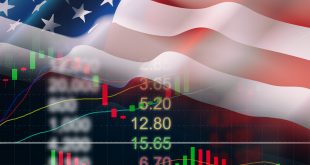Gold Climbs Amid Trade Tensions
Gold prices soared nearly 2% on Friday, May 23, 2025, reaching $3,359 after rebounding from a daily low of $3,287, driven by heightened safe-haven demand. The rally, which marked a 5% weekly gain, was spurred by a weakening U.S. dollar following President Donald Trump’s threat to impose 50% tariffs on European Union imports starting June 1. Trump criticized stalled EU trade talks, while U.S. Treasury Secretary Scott Bessent noted that EU proposals lacked the quality seen in negotiations with other trade partners. The escalating trade war, combined with concerns over U.S. fiscal policy, propelled gold’s upward trajectory.
U.S. Fiscal Concerns Boost Bullion
The passage of a $4 trillion debt ceiling increase in the U.S. House, dubbed “One Big Beautiful Bill,” further fueled gold’s appeal as investors grappled with the U.S.’s growing fiscal deficit. The bill awaits Senate approval, with markets closely watching its potential impact. Moody’s downgrade of U.S. government debt from AAA to AA1, citing fiscal concerns, added to the risk-averse sentiment, enhancing gold’s status as a hedge against economic uncertainty. The U.S. Dollar Index (DXY) fell 0.66% to 99.24, supporting dollar-denominated gold prices.
Mixed Economic Data and Fed Commentary
U.S. economic indicators presented a mixed picture, with April Building Permits dropping 4% month-on-month to 1.422 million, while New Home Sales rose 10.9% to 0.743 million. Federal Reserve officials offered cautious outlooks, with St. Louis Fed’s Alberto Musalem highlighting corporate struggles with supply chain and inflation uncertainties, and Chicago Fed’s Austan Goolsbee advocating for patience until economic clarity emerges. Looking ahead, key data releases, including Durable Goods Orders, the Fed’s meeting minutes, second-quarter GDP estimates, and the Core PCE Price Index, are expected to influence market dynamics.
Geopolitical Developments and Market Outlook
Geopolitical tensions eased slightly, with progress reported in Ukraine ceasefire talks and U.S.-Iran negotiations on Tehran’s nuclear program concluding in Rome. Despite these developments, markets remained cautious due to trade uncertainties. U.S. Treasury yields paused their rise, with the 10-year note yield dipping to 4.505%, and real yields falling to 2.165%. Money markets anticipate 49.5 basis points of Fed easing by year-end, reflecting expectations of looser policy. Gold’s bullish outlook persists, supported by fragile market sentiment and fiscal challenges, positioning it as a favored asset amid ongoing uncertainties.

 Noor Trends News, Technical Analysis, Educational Tools and Recommendations
Noor Trends News, Technical Analysis, Educational Tools and Recommendations




